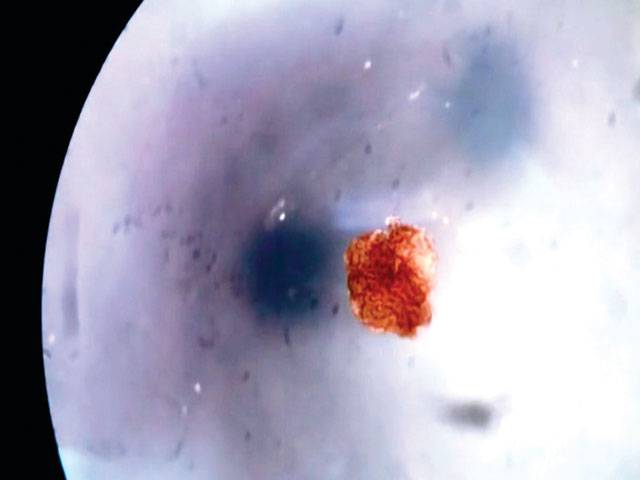WASHINGTON - Scientists in the United States created the first living robots using stem cells, which can move toward a target and heal themselves after being cut. A study published on Monday in Proceedings of the National Academy of Sciences described the living, programmable organism, a completely new biological machine designed from ground up. Scientists at the University of Vermont ran an evolutionary algorithm on a supercomputer to screen out a design to be composed of single frog skin and heart cells.
Then, scientists at Tufts University transferred the in silico design into life with stem cells harvested from embryos of African frogs. They used tiny forceps and electrode to assemble the single cells into a close approximation of the computer designs.
They found that the skin cells formed a more passive architecture, while the once-random contractions of heart muscle cells were put to work creating ordered forward motion, allowing the robots to move on their own.
Those millimeter-wide reconfigurable organisms were shown to be able to move and explore their watery environment for days or weeks, according to the study.
They could move around in circles, collectively pushing pellets into a central location. “It’s a step toward using computer-designed organisms for intelligent drug delivery,” said Joshua Bongard, a computer scientists at the University of Vermont.
“We can imagine many useful applications of these living robots that other machines can’t do,” said Michael Levin at Tufts University, “like searching out nasty compounds or radioactive contamination, gathering microplastic in the oceans, traveling in arteries to scrape out plaque.”
In another test, the scientists cut the living robots and watched what happened. “We sliced the robot almost in half and it stitches itself back up and keeps going,” said Bongard.
Sunday, May 18, 2025
US scientists build first robot made of living cells

10:18 AM | April 26, 2025
-
Lahore emerges among safest global cities in Numbeo 2025 index
-
Lahore emerges among safest global cities in Numbeo 2025 index
-
India’s suspension of Indus Water Treaty legally baseless
-
Seventh polio case reported in Pakistan amid nationwide vaccination drive
-
Pakistan reports sixth polio case of 2025
-
PTA begins issuing VPN licences to regulate usage
Culture Shift
May 18, 2025
Tactical Shift
May 18, 2025
Unmasked Cruelty
May 18, 2025
India Isolated
May 17, 2025
Descent into Hell
May 17, 2025
Fostering Entrepreneurship
May 18, 2025
Behind a Promising Job Offer
May 18, 2025
Indo-Pak Wisdom
May 18, 2025
Traffic Signal at Shahzad Town
May 18, 2025
English a Measure of Intelligence?
May 17, 2025
ePaper - Nawaiwaqt
Nawaiwaqt Group | Copyright © 2025





